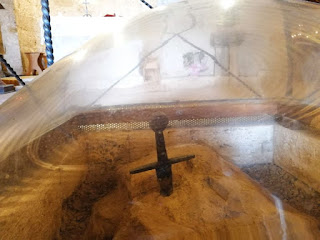John may have had reason to be bitter from the start. His father had sought the pope's blessing to declare John King of Ireland, but Popes Alexander III followed by Lucius III were not in agreement, so John went as "Lord" instead of his hoped-for title "King." He arrived in Waterford with 300 knights and numerous soldiers and archers in April 1185, which of course caused anxiety among the Irish who saw an army rather than a diplomatic mission.
We have Gerald of Wales to thank for details*: his Topographia Hibernica tells how John was greeted by several Gaelic Irish leaders whose long beards made John and his men first laugh and then abuse the Irish by yanking their beards. On his tour through Ireland, he promised land grants to his retainers, further angering the locals.
His supposed goal of setting up administrative structures to maintain Anglo-Norman rule was a failure. He alienated the Irish, he ran out of money to pay his men (and lost some through desertion as well as in battles against Irish forces), and he had little or no skill as an administrator. His opposition in Ireland was not all Irish, either. Hugh de Lacey was an Anglo-Norman baron who had been made Lord of Meath by Henry years earlier. John complained to Henry that de Lacey prevented John from collecting tributes from the Irish leaders. This may well be true: Lacey had established a firm presence, and John's ham-handed approach to Ireland was disrupting a comfortable, pre-existing arrangement.
The Lord of Meath was not to remain a problem for John, however: he was killed a year later by an Irishman, Giolla Gan Mathiar Ó Maidhaigh. John was immediately sent back on hearing the news to take possession of de Lacey's lands.
It is unlikely that the Anglo-Norman plan to take over Ireland would ever be considered a positive event, but John's feckless attitude on his first tour certainly was not beneficial. Of course, there was already an Anglo-Norman presence (Hugh de Lacey, for example). In fact, there was already an Anglo-Norman "Lord" of Ireland, appointed by Henry years earlier but replaced by John at the Council of Oxford. His name was William FitzAldhelm, who was actually sitting at the Council of Oxford when Henry announced John's appointment to replace William. I'll tell you about him tomorrow.
*The illustration is from a copy of the Topographia: it shows the killing of a white mare that is then made into a stew in which the new king bathes before his courtiers eat the stew. (I wouldn't make this up.)




